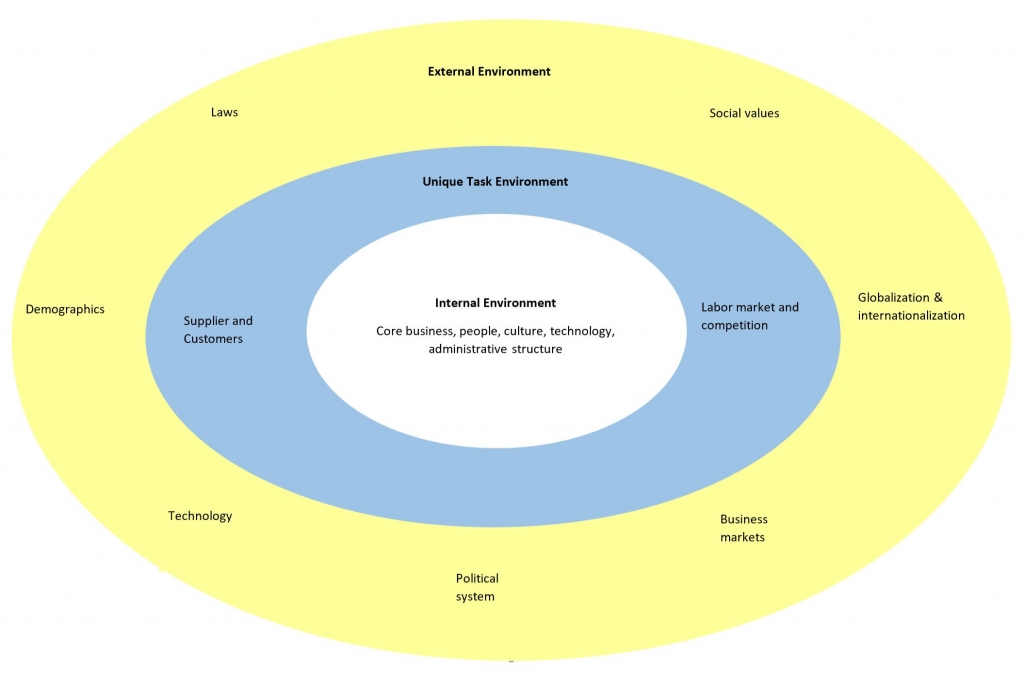-
New Market Development Human Centered Design and Prototyping
4.1 New Market Development Human Centered Design and Prototyping
Learning Outcomes:
- Gain a better understanding of what is essential for success on new markets.
- Learn what human centered design is.
- Better understand the process of human centered design.
- What are prosumers and why are they so valuable in the product development?
New Market Development
The decision to develop a new product is extremely difficult, regardless the size of the company and experience. No matter if you introduce a new product to the same or to a new market, it will always require proper preparation.
Why? Take a look at external an internal factor, which influence markets. They create internal and external environment.

Developing new markets requires gaining extensive knowledge about all the respective elements of internal and external environment in which your product is going to be launched. The characteristics of these elements vary depending on regions, countries, continents. Therefore the deep understanding of all aspects is essential for successful expansion.
But crucial questions before entering new market are as follows:
- What is your target market?
- What is costumer’s profile?
- What are the demographics?
- Was market analysis conducted?
Do you know that…
Even experienced companies sometimes fail while introducing new products to the market. In April 1994 the Anglo-Dutch Unilever launched a new washing powder “Persil Power” across Europe. The product was innovative due to its new ingredient, thanks to which it was supposed to wash whiter in lower temperatures.
Unfortunately, the reports of Unilever’s main competitor and other association pointed out that under special conditions this new detergent significantly damages clothes. As a result, the product was withdrawn and Unilever lost around £300m.
Why?
The testing phase of a new powder was held in Dutch households, where people are used to separate clothes (white from dyed fabrics). Unlike northern Europeans, consumers in the South tend to wash whites and colored cloths together and set rather hot wash irrespective of any instructions.
What is more, the collaboration between research, development and marketing departments was inefficient.
Target market is the market group of customers to which the products or services will be sold. This group is defined by a customer’s profile.
Customer’s profile should provide information on:
Customer type:
Individual
General:
Gender, Age, Marital Status, Parental Status, Profession, Financial Profile, Income, Investments, Debts,
Customers’ needs:
Buying Habits, Lifestyle, Interests, What is Important to Them, Religion, Worldview
Customer type:
Business
General:
Type of Business, Industry, Number of Years in Business, Number of Employees, Products or Services, Organizational Structure, Annual Revenue, Geographical Scope of Activity
Customers’ needs:
Purchase Decision-Makers, Special Needs, Other Needs, How your product differs from your competitor’s.
Demographics should answer on the question whether our target group is stable, expanding or shrinking.
Well prepared market analysis should:
- Support your decision and give rationale (or do not) to start creating a new product and services investing various resources.
- Assure you that customers will buy your product because there is a need for it.
Do you know that…
Global population is 7.6 billion according the latest data (September 2018).
Even though The current average population increase is estimated at 83 million people per year, Europe is shrinking due to the low fertility rate. The most rapidly growing continent is Africa. The most populated is Asia with 60% of global population (over 4.5 billion).
It is projected that global population will reach 10 billion persons in the year 2055.
Is your country expected to decrease or increase in the next 20 years?
Market analysis
Typical market analysis includes:
- Industry description and outlook
- Target market including customers profile and market size
- Competitive analysis (focusing on direct and indirect competitors, their strengths and weaknesses)
- Stakeholders analysis
- Projections including market share and pricing and gross margin
- Regulations
Monitoring trends
External trends can be seen in all industries. Exploring these trends can bring you a valuable inspiration to introduce frugal innovation.
Example: Body Shop offering natural cosmetics. Body Shop resigned from the glamour image, which usually is present in this retail sector. They focused on natural ingredients and the promotion of a healthy life style. The comparison of the success factors of Body Shop to typical cosmetic company is presented in the picture below.


